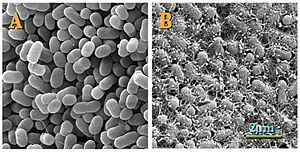 EColi
EColi
The diseases caused by EHEC
Symptoms of the diseases caused by EHEC include abdominal cramps and diarrhoea that may in some cases progress to bloody diarrhoea (haemorrhagic colitis). Fever and vomiting may also occur. The incubation period can range from three to eight days, with a median of three to four days. Most patients recover within 10 days, but in a small proportion of patients (particularly young children and the elderly), the infection may lead to a life-threatening disease, such as haemolytic uraemic syndrome (HUS). HUS is characterized by acute renal failure, haemolytic anaemia and thrombocytopenia. It is estimated that up to 10% of patients with EHEC infection may develop HUS, with a case-fatality rate ranging from 3% to 5%. Overall, HUS is the most common cause of acute renal failure in young children. It can cause neurological complications (such as seizure, stroke and coma) in 25% of HUS patients and chronic renal sequelae, usually mild, in around 50% of survivors.
The incidence of EHEC infections varies by age group, with the highest incidence of reported cases occurring in children aged under 15 years (0.7 cases per 100 000 in the United States). Sixty-three to 85% of cases are a result of exposure to the pathogen through food. The percentage of EHEC which progress to HUS varies between sporadic cases (3%-7%) and those associated with outbreaks (20% or more). In epidemiological terms, there is generally a background of sporadic cases, with occasional outbreaks. Some of these outbreaks have involved a high number of cases, such as in Japan in 1996, where an outbreak linked to contaminated radish sprouts in school lunches caused 9 451 cases. Data on the situation in developing countries are limited, as surveillance for this pathogen is not done routinely.
No comments:
Post a Comment